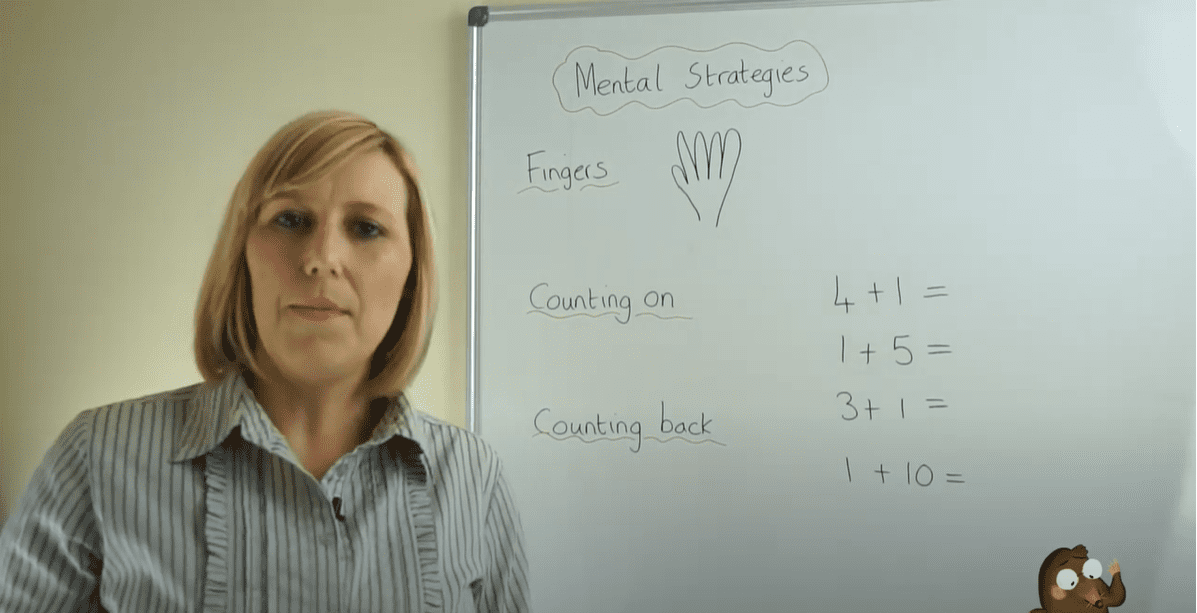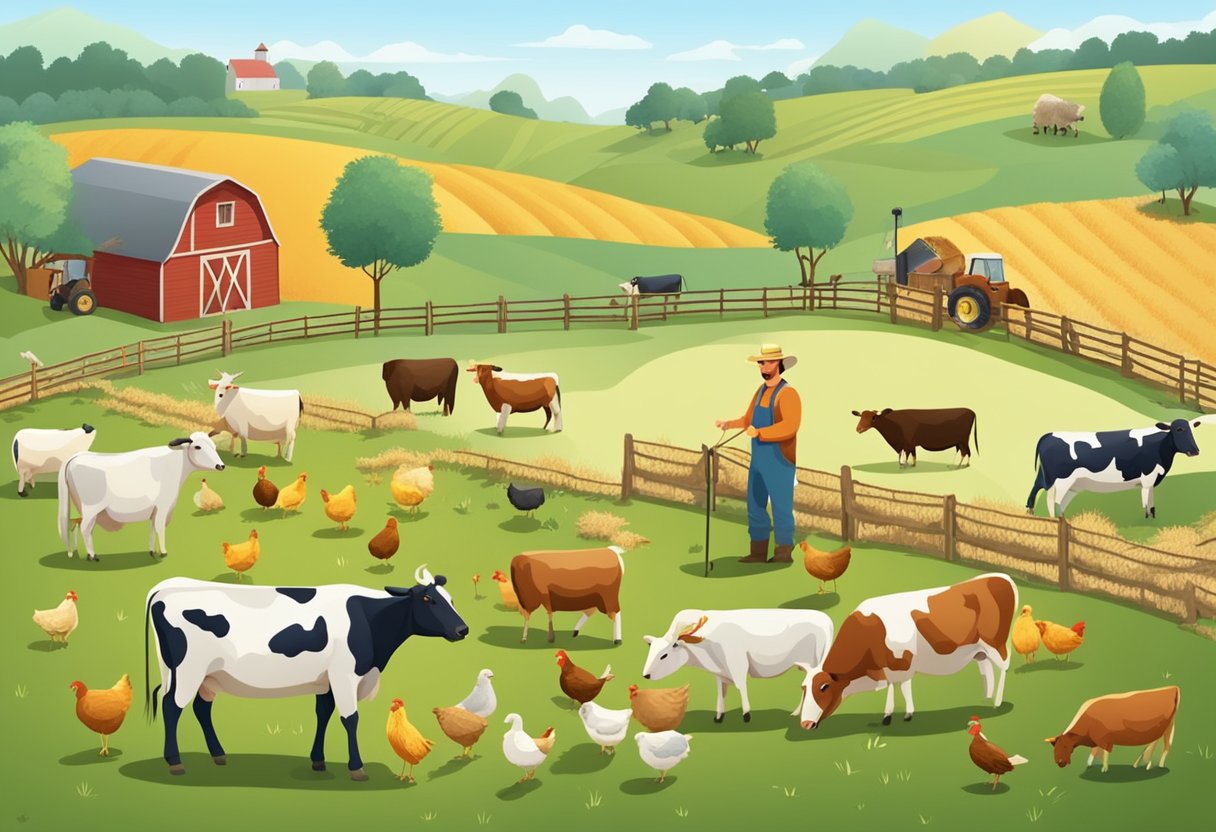
Interesting Mental Math Addition Strategies – Steps for Partitioning
Table of Contents
Mental math addition strategies are a very important part of your child’s mathematical journey. It is important that your child can discuss and talk about their problem-solving strategies. Children need to have opportunities to explore a range of mental math methods that they can use in a range of contexts. This video explains an addition strategy with simple steps to help your child partition and recombine numbers.
More videos on mental math strategies.
Interesting Mental Math Addition Strategies
To help parents homeschool their kids with math, there are different mental math strategies that we would recommend. It is important to develop the mental math strategies of the child to know the time and place for the mental strategies and also know the time and place for the written methods.
It is important to start this journey from the early years to give the child the chance to make the right decision about when to use a specific method when dealing with the different mathematical operations that they come to solve.
In this educational video, there are three different mental math strategies that we have here, the usage of the fingers, counting which is used with addition and eventually, counting back which is mainly about subtraction. Basic addition and subtraction, which is all about adding and subtracting one more, is the one to start with to give the child the chance to process this in their mind.
One of the very basic methods used in counting or adding is the fingers. Kids depend on their fingers to bring out the final answer for the equation they are trying to solve. All the kids will do when asked to add 3+1 for example, is put the three fingers on one hand and one finger on the other, combine them and count the answer (Counting to 10 for….).
Getting the child to start visualizing the whole thing is important, to start imaging the three fingers in their head and the one finger which will be added to them to also visualize the final answer. At some point, the kid might still look at their fingers while doing the whole calculation in their head but without actually going through the process of physically counting those fingers.
Once the child is done with the fingers and could visualize the whole thing in their head, they could then move forward to counting. Counting is another mental math strategy that is really important because it gets the child to think about the sequencing of numbers, the order of numbers, and all such mathematical skills. In counting on, it is important to stress on the fact that placing the bigger number first is always important especially with mental addition.
How to improve mental math skills
Kids should reorder the equation to place the big numbers first before moving forward to the smaller ones which they will count in their heads. Try to test the child’s mind and bring two different equations, one with the bigger number first and one with the bigger number placed at the end, and ask them which one should go first and how to do the calculation (Reordering in Basic Addition).
Once the kids are done with the counting on method and are ready to move forward with a new mental math strategy, they will then learn the counting back. Counting back is related to the subtraction element and in this case, the kids will need to depend on their fingers once again to make it easier for them, by placing three fingers up and then removing one from them to find that the answer is 2.
With practice, kids will be eventually able to do these different calculations without the need to count on their fingers because they will realize that it is just a process to make it easier and that they could easily do it in their heads.
Again, using the mathematical vocabulary and terminology is important by telling the kids to count which is the same as addition or else telling them to count back which is the same as subtraction and taking away, all these will make the understanding of the mathematical equation in front of them much easier and they will know what they are supposed to do or solve.
Finally, part of the mathematical language we are referring to is letting the child know more about what number comes before, what numbers come after, what number comes in between and so forth, which are all things the kids will know about by practising (Addition for Kids).
Start with teaching the kids to use their fingers to learn counting on and counting back, and then count in their heads.
Help your child to explore the key concepts of numbers, counting, addition, subtraction, multiplication and division in maths. Spelling, reading, writing and grammar in English. Help them to develop their imagination and creativity with crafts and to explore a range of skills to cook, bake and create tasty treats and snacks.
Easy-to-follow activities will support you and your child to learn and practice new concepts as well as enjoy spending time together. Help your child to progress and explore and most importantly – have fun!
Importance of Mental Math Skills Development at an Early Age
Mental math, the ability to perform calculations without relying solely on external tools like calculators, offers a crucial foundation for mathematical success and overall cognitive development in children. Mastering mental math at an early age unlocks various benefits that extend far beyond quick calculations, impacting a child’s learning journey and well-being in various ways. Here’s a closer look at the importance of nurturing mental math skills in young children:
1. Enhanced Number Sense and Fluency:
Building a Strong Foundation: Early exposure to mental math activities helps children develop number sense – the intuitive understanding of numbers and their relationships. This foundational understanding translates to improved fluency in performing both mental and written calculations in the future.
Internalizing Number Concepts: By manipulating numbers mentally, children solidify their grasp of basic concepts like counting, addition, subtraction, and place value. This internalization leads to a deeper understanding of mathematical operations, not just memorization of procedures.
2. Improved Problem-Solving and Critical Thinking:
Breaking Down Complexities: Mental math encourages children to break down complex calculations into smaller, more manageable steps. This fosters critical thinking skills as they analyze problems, strategize solutions, and apply various mental strategies to arrive at the answer.
Building Confidence in Decision-Making: Successfully navigating mental math challenges builds confidence in children’s problem-solving abilities. They learn to approach problems with a strategic mindset, analyze options, and make informed decisions, which are valuable skills applicable in various areas of life.
3. Boosted Cognitive Development:
Brain Training: Engaging in mental math activities acts as a brain workout, stimulating memory, concentration, and cognitive flexibility. These cognitive functions play a crucial role in learning and academic success, impacting all subjects, not just math.
Sharpened Memory and Attention: Mental math exercises require actively recalling and manipulating information in the mind. This strengthens memory and improves attention span, allowing children to focus better on tasks and retain information more effectively.
4. Increased Confidence and Positive Attitude towards Math:
Building upon Success: Mastering mental math tasks fosters a sense of accomplishment and boosts confidence in children’s mathematical abilities. This positive attitude towards math encourages them to approach further math learning with curiosity and a willingness to take on challenges.
Making Math Enjoyable: Engaging mental math activities can transform math learning from a chore into an enjoyable experience. This fosters a positive association with math, making children more receptive to future learning and exploration within the subject.
5. Practical Applications and Lifelong Benefits:
Real-World Relevance: Mental math skills find application in various everyday situations, from estimating costs at the grocery store to calculating time or making quick decisions. Equipping children with these skills empowers them to navigate daily life with confidence and independence.
Long-Term Impact: The benefits of strong mental math skills extend beyond childhood. These skills contribute to success in various academic disciplines, careers, and personal endeavors throughout life.
The Powerful Connection Between Mental Math and Problem-Solving Abilities
While the ability to perform quick calculations is a valuable benefit of mental math, its true significance lies deeper. Mental math plays a crucial role in developing and strengthening essential problem-solving abilities in children, acting as a vital stepping stone for success in various aspects of life. Here’s a closer look at the intricate connection between these two domains:
1. Breaking Down Complexities:
Mental math trains the brain to dissect complex problems: When performing mental calculations, children don’t simply arrive at answers; they break down the problem into smaller, more manageable steps. This process mirrors the core of problem-solving – analyzing the situation, identifying components, and building a solution step-by-step.
Developing analytical thinking: Mental math exercises require analyzing the numbers involved, their relationships, and potential strategies to reach the answer. This fosters analytical thinking skills, teaching children to approach problems strategically and weigh different options before arriving at a solution.
2. Fostering Strategic Thinking and Planning:
Experimenting with different approaches: Mental math encourages experimentation with various strategies to solve the same problem. This allows children to explore different approaches, evaluate their effectiveness, and choose the most efficient one. This trial-and-error approach translates to developing strategic thinking skills, crucial for tackling complex problems in various contexts.
Planning and anticipating outcomes: Solving mental math problems often involves planning ahead. Children need to consider the order of operations, anticipate potential difficulties, and adjust their approach as needed. This process strengthens planning skills and the ability to anticipate outcomes, essential for effective problem-solving.
3. Building Confidence and Perseverance:
Overcoming challenges: Mental math activities can be challenging, and successfully solving them fosters a sense of accomplishment and builds confidence in children’s abilities. This confidence spills over into other areas, encouraging them to approach problems with a positive attitude and a belief in their ability to find solutions.
Developing perseverance: Not every attempt at mental math will be successful. However, the process of trying different approaches, learning from mistakes, and persisting through challenges is crucial for developing perseverance. This valuable skill equips children to tackle complex problems in other areas, encouraging them to stay focused and motivated even in the face of difficulties.
4. Enhancing Creativity and Flexibility:
Thinking outside the box: Mental math doesn’t always have a single “right” way to solve a problem. Often, there are multiple approaches that can lead to the correct answer. This encourages children to think creatively and explore different solutions, fostering flexibility in their problem-solving mindset.
Adapting to new situations: The skills developed through mental math, like analytical thinking and strategic planning, are transferable to various situations. Children learn to adapt their problem-solving approach based on the specific context, preparing them to tackle diverse challenges throughout their lives.
Fun Mental Math Activities & Games to Practice Addition:
Learning addition doesn’t have to be confined to traditional worksheets and drills. There are numerous engaging activities and games that can transform practice into an enjoyable and enriching experience for children. Here are some ideas to get you started:
1. Interactive Games:
Number Line Race: Draw a number line on the floor or use a large piece of paper. Players take turns rolling dice and jumping forward the corresponding number on the line. The first player to reach the finish line wins. This incorporates addition and counting practice.
Roll and Add: Each player rolls two dice, adds the numbers, and moves that many spaces on a board. The player who reaches the end first wins. This can be customized by adding obstacles or bonus squares that require additional calculations.
2. Card Games:
Go Fish for Sums: Create flashcards with different addition facts written on them. Players take turns drawing cards and asking others if they have a card that adds up to a specific sum (e.g., “Do you have a 3? I need a 7”). The first player to collect all the cards needed to reach a specific target sum wins.
Concentration with Sums: Create pairs of cards with addition problems and their corresponding answers. Shuffle the cards and lay them face down. Players take turns flipping two cards. If they find a matching pair (problem and answer), they keep the cards. The player with the most pairs at the end wins.
3. Movement and Action Games:
Flashcard Relay Race: Divide players into teams and line them up facing a set of flashcards with addition problems. At the start signal, the first player from each team runs to the flashcards, solves a problem aloud, and runs back to tag the next teammate. The first team to finish all the problems correctly wins.
Simon Says Addition: Play a modified version of Simon Says where the commands involve addition. For example, Simon says, “Jump 2 + 3 times.” This incorporates movement, listening skills, and mental math practice.
4. Real-World Applications:
Grocery Store Challenge: During grocery shopping, encourage children to help add up the prices of items. This makes addition practical and relevant to their everyday experiences.
Cooking Time: When following a recipe, involve children in measuring ingredients and adding them together. This connects addition to practical tasks and reinforces measurement concepts.
5. Technology Integration:
Educational Apps: Explore educational apps specifically designed for practicing addition. Many apps offer interactive games, challenges, and rewards to keep children engaged and motivated.
Online Games: Look for age-appropriate online games that involve addition practice in a fun and interactive format.
Remember:
Adapt the activities to the child’s age and ability level.
Make it fun and interactive! Laughter and positive reinforcement are key to keeping children engaged and motivated.
Celebrate their progress, not just perfect scores.
Incorporate a variety of activities to keep things interesting and prevent boredom.
Differences Between Mental Math Strategies and Written Vertical Addition Methods:
While both mental math strategies and written vertical addition methods aim to solve addition problems, they differ significantly in their approach, suitability, and underlying concepts. Here’s a breakdown of the key differences:
1. Approach:
Mental Math Strategies:
– Informal and flexible: These strategies rely on internal calculations and estimations, often breaking down problems into smaller, easier-to-manage steps.
– Focuses on conceptual understanding: Mental math emphasizes understanding the underlying concepts of addition, such as place value and number relationships, rather than just memorizing procedures.
Written Vertical Addition Method:
– Formal and structured: This method follows a step-by-step algorithm, aligning digits by place value and carrying over when necessary.
– Focuses on procedural fluency: The written method emphasizes mastering the specific steps involved in the algorithm to accurately reach the answer.
2. Steps Involved:
Mental Math Strategies:
– Highly varied depending on the strategy and individual: Common strategies include decomposition, compensation, rounding, and making use of number properties.
– Often involve estimation and approximation: Mental math calculations may not always be exact but provide a close enough answer for many situations.
Written Vertical Addition Method:
– Follows a consistent set of steps: These steps include aligning digits by their place value, adding each place value column individually, and carrying over when necessary.
– Aims for accuracy: The focus is on following the steps precisely to arrive at the exact answer.
3. Suitability:
Mental Math Strategies:
– Suitable for smaller numbers and everyday calculations: These strategies are ideal for quick estimations, basic addition facts, and situations where an exact answer is not crucial.
– Develops mental agility and problem-solving skills: They encourage critical thinking, flexibility, and adapting to different situations.
Written Vertical Addition Method:
– Suitable for larger numbers and complex calculations: This method ensures accuracy and clarity for solving problems with multiple digits or involving carrying over.
– Provides a clear record of the calculation process: The written steps can be helpful for checking accuracy and understanding the process involved.
4. Record Keeping:
Mental Math Strategies:
– Mental calculations do not leave a physical record: The process and thought process mainly occur internally.
– Relies on memory and recall: Individuals need to remember the steps and intermediate calculations involved.
Written Vertical Addition Method:
– Provides a permanent record of the calculation: The written steps serve as a record of the process and can be referred to later if needed.
– Reduces reliance on memory: The written steps alleviate the need to remember every intermediate step.
Addressing Potential Challenges, Kids Face in Learning Mental Calculations:
Learning mental math can be a rewarding experience for children, but it’s also natural for them to encounter challenges along the way. Here are some common difficulties students might face and strategies to address them:
1. Lack of Number Sense:
- Challenge: Children struggling with number sense might have difficulty understanding the value of each digit within a number and how they relate to each other. This can hinder their ability to break down problems and strategize mentally.
- Strategies:
- Focus on concrete activities: Use manipulatives like counting blocks or place value blocks to help children visualize quantities and understand place value concepts.
- Sing number songs and play counting games: Activities that involve rhythmic counting and associating numbers with real-world objects can build foundational number sense skills.
- Introduce basic addition facts through real-life contexts: Connect addition to everyday situations like counting toys or distributing snacks, making the concept more relatable.
2. Difficulty Memorizing Facts:
- Challenge: Some children might struggle to memorize basic addition facts, making mental calculations more challenging.
- Strategies:
- Use flashcards in a fun and interactive way: Engage children in games like “Go Fish” or Concentration with addition facts, turning memorization into an engaging activity.
- Focus on understanding, not just memorization: Explain the logic behind addition facts and connect them to place value concepts to encourage deeper understanding.
- Practice regularly in short bursts: Instead of long, tedious sessions, incorporate short bursts of addition practice throughout the day to reinforce learning without causing fatigue.
3. Anxiety and Lack of Confidence:
- Challenge: Negative experiences or fear of getting the wrong answer can create anxiety and hinder motivation to learn mental math.
- Strategies:
- Create a positive and encouraging environment: Celebrate effort and progress, even if the answer isn’t always perfect. Focus on the learning process and the joy of discovery.
- Provide opportunities for success: Start with easier problems and gradually increase the difficulty as children gain confidence.
- Offer choices and control: Allow children to choose the strategies they feel comfortable using and encourage them to explain their thought process, fostering a sense of ownership over their learning.
4. Difficulty with Abstract Concepts:
- Challenge: Some children might struggle with abstract concepts like place value and carrying over in addition, making mental manipulation of numbers challenging.
- Strategies:
- Use visual aids and manipulatives: Concrete representations like drawings, number lines, or counting blocks can help children visualize the concepts and make them more concrete.
- Break down complex problems into smaller steps: Guide children through the steps involved in carrying over and manipulating numbers, building a deeper understanding gradually.
- Connect mental math to real-world applications: Show how mental math skills are used in everyday situations like calculating change at a store, making the concepts more relevant and relatable.
5. Attention and Focus Issues:
- Challenge: Children with attention difficulties might struggle to stay focused during mental math activities, leading to errors or frustration.
- Strategies:
- Keep activities short and engaging: Break down mental math practice into smaller, manageable chunks to prevent overwhelm.
- Offer movement breaks: Incorporate movement into the learning process by playing active games that involve mental math, like jumping the sum of two numbers or clapping the number of digits.
- Provide a distraction-free environment: Minimize distractions and create a calm space conducive to focused learning.
FAQ (Frequently Asked Questions)
1. What are some benefits of developing strong mental math skills?
Developing strong mental math skills offers numerous benefits, including:
- Improved problem-solving abilities: Mental math encourages strategic thinking and helps break down complex problems into manageable steps.
- Enhanced number sense and fluency: Regular practice strengthens understanding of numbers and their relationships, leading to faster and more accurate calculations.
- Boosted confidence and positive attitude towards math: Successfully mastering mental math challenges builds confidence and fosters a positive learning experience.
- Increased cognitive development: Mental math activities stimulate memory, concentration, and cognitive flexibility, impacting overall cognitive development.
- Practical applications in everyday life: Mental math skills find application in various situations, from estimating costs to managing time effectively.
2. How can I help my child develop strong mental math skills?
Here are some ways to help your child:
- Engage in fun and interactive activities: Games, songs, and real-world applications make learning enjoyable and engaging.
- Incorporate mental math into daily routines: Encourage estimation and quick calculations during shopping, cooking, or travel.
- Use manipulatives and visual aids: Counting blocks, number lines, and other visual aids can support understanding and visualization.
- Focus on understanding, not just memorization: Explain the logic behind operations and connect them to real-world scenarios.
- Celebrate progress and effort: Encourage your child, even if they don’t always get the right answer right away.
3. Are there any resources available to help me teach my child mental math?
Yes! Numerous resources are available online and offline, including:
- Educational websites and apps: Many websites and apps offer interactive games and activities specifically designed to practice mental math.
- Printable worksheets and workbooks: These resources provide structured practice opportunities with varying difficulty levels.
- Children’s books and educational toys: Engaging books and toys can introduce math concepts and encourage exploration in a fun way.
Conclusion
Developing strong mental math skills is a valuable investment in a child’s overall learning and future success. By incorporating engaging activities, fostering a positive learning environment, and celebrating their progress, we can empower children to become confident and capable problem-solvers, not just in math, but in all aspects of life. Remember, the journey of learning mental math should be enjoyable and filled with discovery, paving the way for a lifelong love of learning and exploration.
Have you found this interesting? Come and check our maths articles: Mental Math Tricks, Multiplication Tricks, and Magic Math Tricks.



Leave a Reply